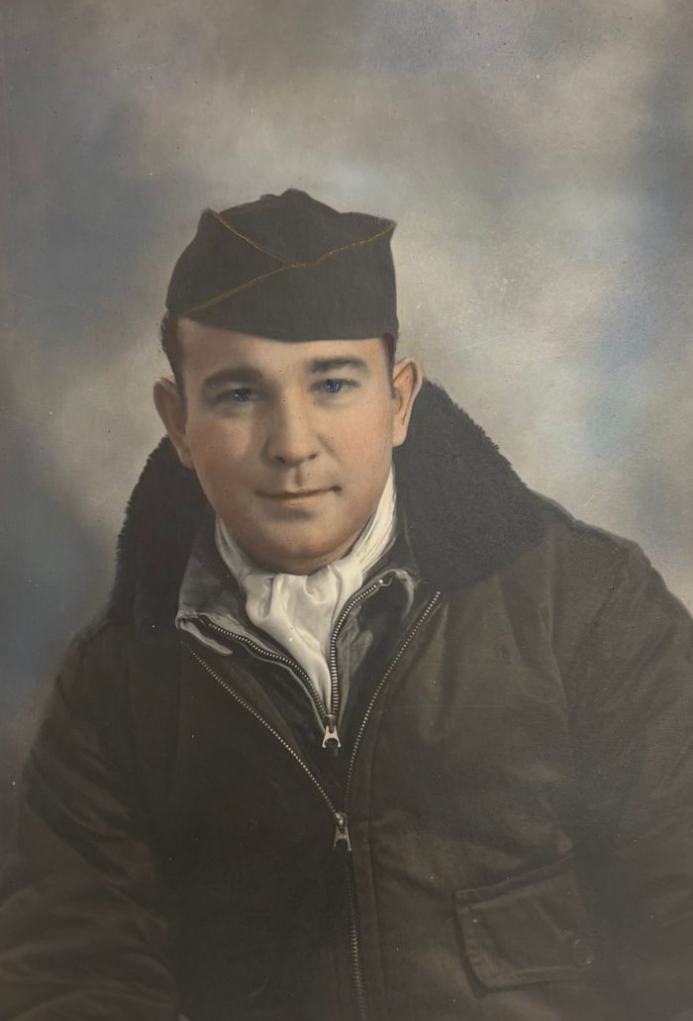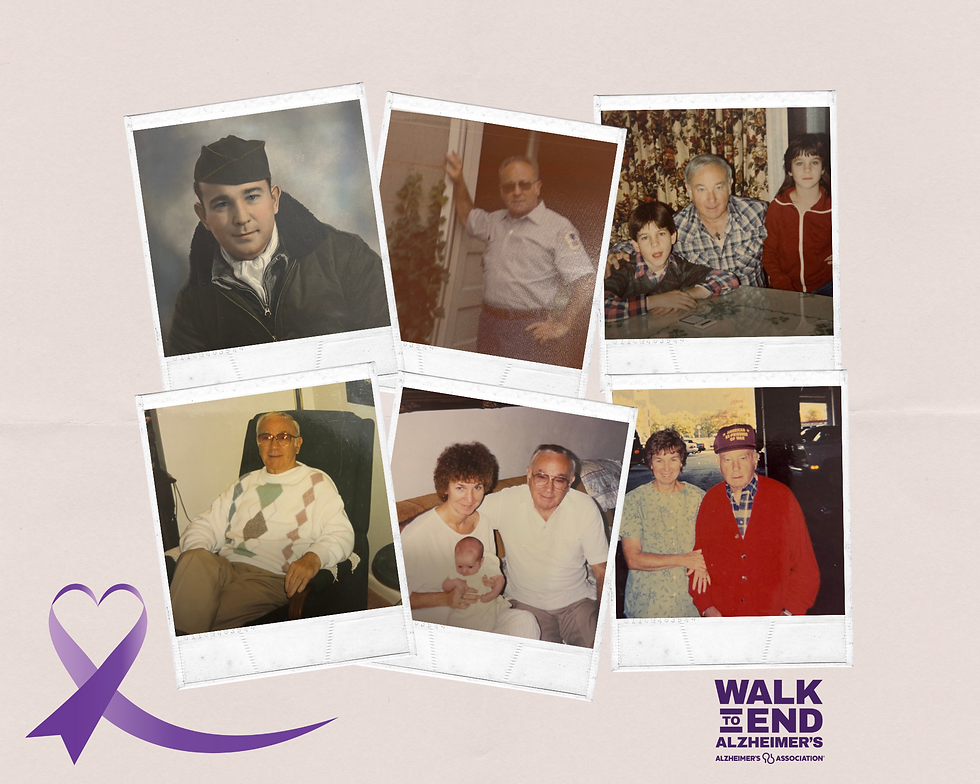Why I Wear Purple
- Beth Caldwell

- Mar 18
- 4 min read
Updated: Jul 14

This is my Pap Moran. He was a World War II POW, proud mail carrier,
devoted husband, father, grandpa, and baseball coach. 💜
I am deeply honored to announce that I have been invited to serve as the Honorary Executive Chair for the 2025 Pittsburgh Walk to End Alzheimer’s. This is a prestigious role, and I’m especially proud to be the first woman to hold this position.
Alzheimer’s is a disease that has touched so many lives, including those of my own family and dear friends. For me, this fight is personal. I'm walking to remember someone special.
I’ll never forget the day I got the phone call from my mom. I had just finished bathing my toddler sons when she told me that our former neighbor, Ed, had found my grandfather two miles from home. He was standing outside a boarded-up church, banging on the door. That church had once been his elementary school. When Ed asked what he was doing, my grandfather simply replied, “I’m late for school.” Pap was 79 at the time.
Within a week, he was diagnosed with Alzheimer’s. We lost him in just three years, watching as the disease slowly took away the man we loved. So, why do I wear purple?
One of the most poignant and symbolic aspects of the walk is the Promise Garden, a place where participants carry colorful flowers that represent their personal connections to Alzheimer’s disease. Each color flower holds a special meaning, reflecting the diverse experiences and hopes of those affected by this devastating disease. Here’s what each color flower signifies:
Blue Flower: I Have Alzheimer’s
Participants carrying blue flowers represent individuals who are currently living with Alzheimer’s disease or another form of dementia. These individuals are the reason behind the fight, and their presence at the walk highlights the urgency of finding a cure. The blue flower symbolizes their strength and courage in facing the challenges of the disease.
Purple Flower: I Have Lost Someone to Alzheimer’s
The purple flower is carried by those who have lost a loved one to Alzheimer’s disease. It represents the deep sense of loss and grief that comes with losing someone to this relentless disease. The purple flower is a tribute to those who have passed away and a reminder of the importance of continuing the fight to end Alzheimer’s.
Yellow Flower: I Am Supporting or Caring for Someone with Alzheimer’s
Those carrying yellow flowers are supporters and caregivers of individuals living with Alzheimer’s. Caregivers play a crucial role in the lives of those affected by the disease, providing daily care, support, and love. The yellow flower represents their dedication, compassion, and the significant sacrifices they make to care for their loved ones.
Orange Flower: I Support the Cause and Vision of a World Without Alzheimer’s
Participants with orange flowers are advocates for the cause who may not have a direct personal connection to the disease but are committed to supporting the vision of a world without Alzheimer’s. The orange flower symbolizes the collective determination to raise awareness, fund research, and work towards a future where Alzheimer’s no longer exists.
White Flower: The Hope for a Cure
The white flower represents the hope for a future without Alzheimer’s disease. It is the symbol of the first survivor of Alzheimer’s. While no one carries a white flower yet, it stands as a beacon of hope and a powerful reminder of the ultimate goal: to find a cure for Alzheimer’s. The white flower inspires participants to continue advocating, fundraising, and supporting research efforts until the day comes when the first survivor is celebrated.
That’s why I’ll be wearing purple on October 18th and walking to support groundbreaking research happening right here in Pittsburgh. Thanks to new advancements in treatment, early screening tools, and medications, families today have hope—hope that wasn’t available when my grandfather was diagnosed.
I'm especially proud to be a part of the Pittsburgh Walk Team for several reasons:
Last year, the Pittsburgh team raised over $700,000, being ranked #26 in the country in overall fundraising. This is impressive as they accomplished this with only 2500 participants. I can only imagine what we can do if we double that number.
The Walk to End Alzheimer's program is the number one fundraising event dedicated to Alzheimer's and dementia research worldwide.
The University of Pittsburgh is the most funded research lab receiving approximately $2.3 million annually from The Walk to End Alzheimer's. I'm especially pleased that this life-changing research is happening right here at home.
The Promise Garden -what a wonderful feeling to be a part of a global movement that benefits each one of us. It's truly inspirational, uplifting and meaningful.
I believe that when passionate people come together for a common cause, extraordinary things happen. Will you join me?
Here's how you can participate:

Together, we can raise awareness, fund life-changing research, and move closer to a future without Alzheimer’s.
With gratitude,
Beth Caldwell
Honorary Executive Chair, 2025 Pittsburgh Walk to End Alzheimer’s
Executive Director, Pittsburgh Professional Women
*To join my personal team, the Circle of Success, walkers commit to raising $1,000 each between now and October 18, 2025
**To join the Pittsburgh Professional Women fundraising team, walkers commit to raising $500 each between now and October 18, 2025





